 Search by Keyword
|
“ASK ME WHY”
(Paul McCartney – John Lennon)
 The Beatles were very keen observers of popular music. They spent a lot of time foraging through NEMS record department, run by Brian Epstein, as well as listening to radio programs and going to concerts to find suitable music for performing in their stage act. In the process, the group had become great fans of American music. Among their favorites were the sounds coming over from Detroit, Michigan, these being crafted by the newly formed label known as Motown. The Beatles were very keen observers of popular music. They spent a lot of time foraging through NEMS record department, run by Brian Epstein, as well as listening to radio programs and going to concerts to find suitable music for performing in their stage act. In the process, the group had become great fans of American music. Among their favorites were the sounds coming over from Detroit, Michigan, these being crafted by the newly formed label known as Motown.
 During their early performing days, they had chosen many Motown hits, as well as other R&B classics, to cover. But the influence of that unique sound from Detroit permeated their songwriting as well. One of John Lennon’s favorite Motown artists was “The Miracles,” as they were then known. Although this group, which featured the songwriting and singing of Smokey Robinson, were relatively new as of the spring of 1962 (they only had two charted singles at the time, including the smash hit “Shop Around”), it was enough to influence John to co-write “Ask Me Why,” the first of many songs to be credited with The Miracles’ influence. During their early performing days, they had chosen many Motown hits, as well as other R&B classics, to cover. But the influence of that unique sound from Detroit permeated their songwriting as well. One of John Lennon’s favorite Motown artists was “The Miracles,” as they were then known. Although this group, which featured the songwriting and singing of Smokey Robinson, were relatively new as of the spring of 1962 (they only had two charted singles at the time, including the smash hit “Shop Around”), it was enough to influence John to co-write “Ask Me Why,” the first of many songs to be credited with The Miracles’ influence.

Canadian single
Songwriting History
 The songwriting takes us to approximately April 1962, with an original Lennon idea that was presented to Paul. "It was John's original idea and then we both sat down and wrote it together, just did a job on it," Paul stated in his 1997 book "Many Years From Now," then adding, "It was mostly John's." The meaning of doing "a job on it," as McCartney explained, most likely referred to its complicated structure (as detailed below). Despite John Lennon being the song's principal songwriter, both the original UK single and album listed this composition as being written by "McCartney - Lennon," most other countries following suit. Interestingly, the US single release on Vee-Jay Records inadvertently listed it correctly as a "Lennon - McCartney" composition. The songwriting takes us to approximately April 1962, with an original Lennon idea that was presented to Paul. "It was John's original idea and then we both sat down and wrote it together, just did a job on it," Paul stated in his 1997 book "Many Years From Now," then adding, "It was mostly John's." The meaning of doing "a job on it," as McCartney explained, most likely referred to its complicated structure (as detailed below). Despite John Lennon being the song's principal songwriter, both the original UK single and album listed this composition as being written by "McCartney - Lennon," most other countries following suit. Interestingly, the US single release on Vee-Jay Records inadvertently listed it correctly as a "Lennon - McCartney" composition.
 According to Mark Lewisohn's book "Tune In," there was one particular Miracles' song that was released in Britain at that time that inspired John to write "Ask Me Why," this being "What's So Good About Goodbye." This book states, "With interesting melodic key shifts and a Latin lilt, 'Ask Me Why' was written in the first person: the singer so loves a girl that he could cry with joy. The lyric is corny but tender and never cloying or syrupy. John's literacy shows up in the line 'I can't conceive of any more misery.' Not many songs use the word 'conceive.' Several, however, had 'misery'...likely it was from 'All I've known is misery' in 'What's So Good About Goodbye,' which also happened to include the words 'tell me why.'" According to Mark Lewisohn's book "Tune In," there was one particular Miracles' song that was released in Britain at that time that inspired John to write "Ask Me Why," this being "What's So Good About Goodbye." This book states, "With interesting melodic key shifts and a Latin lilt, 'Ask Me Why' was written in the first person: the singer so loves a girl that he could cry with joy. The lyric is corny but tender and never cloying or syrupy. John's literacy shows up in the line 'I can't conceive of any more misery.' Not many songs use the word 'conceive.' Several, however, had 'misery'...likely it was from 'All I've known is misery' in 'What's So Good About Goodbye,' which also happened to include the words 'tell me why.'"
 Author Mark Lewisohn continues: "'Ask Me Why' had other echoes of Smokey Robinson's artistry. Both songs open with similar guitar figures and also feature verses that end in falsetto. But this was not plagiarism; Smokey (Robinson) was just the springboard to John's creativity, his song ending up different." Author Mark Lewisohn continues: "'Ask Me Why' had other echoes of Smokey Robinson's artistry. Both songs open with similar guitar figures and also feature verses that end in falsetto. But this was not plagiarism; Smokey (Robinson) was just the springboard to John's creativity, his song ending up different."
Recording History
 The first time this song was premiered in the recording studio was the first time that The Beatles (with Pete Best) were in an EMI recording studio, this historic date being June 6th, 1962. They recorded four songs during this two hour session (6 to 8 pm.) and “Ask Me Why” was the last. Brain Epstein typed up a song list for The Beatles as suggestions for what to perform on this day, "Ask My Why" being one of these. Since Brian Epstein mistakenly thought that George Martin was impressed by the classic renditions of older material that The Beatles had worked up, he included mostly cover songs on his list. The first time this song was premiered in the recording studio was the first time that The Beatles (with Pete Best) were in an EMI recording studio, this historic date being June 6th, 1962. They recorded four songs during this two hour session (6 to 8 pm.) and “Ask Me Why” was the last. Brain Epstein typed up a song list for The Beatles as suggestions for what to perform on this day, "Ask My Why" being one of these. Since Brian Epstein mistakenly thought that George Martin was impressed by the classic renditions of older material that The Beatles had worked up, he included mostly cover songs on his list.
 However, after the group's interpretation of The Coaster's “Besame Mucho” was performed, it became apparent that EMI desired original material, publishers Ardmore and Beechwood wanting to secure publishing deals from The Beatles' first single. This suited the band just fine, being that they wanted to record original material anyway. After an unknown number of takes were performed of “Love Me Do” and “P.S. I Love You,” they then presented “Ask Me Why” for consideration. However, after the group's interpretation of The Coaster's “Besame Mucho” was performed, it became apparent that EMI desired original material, publishers Ardmore and Beechwood wanting to secure publishing deals from The Beatles' first single. This suited the band just fine, being that they wanted to record original material anyway. After an unknown number of takes were performed of “Love Me Do” and “P.S. I Love You,” they then presented “Ask Me Why” for consideration.
 George Martin apparently was not present during the complete session this day, but was called in from the studio canteen (where he was taking a tea break) to witness them perform “Love Me Do.” Since George Martin then took over the rest of the session, he was present during their unnumbered takes of “Ask Me Why” on that day, which occurred approximately at 7:30 pm. At the end of this session it was determined by George Martin and his associate producer Ron Richards that the material recorded on this day wasn't worthy of record release and another session needed to be booked for a future date. This recording of "Ask Me Why" was lost or recorded over, this being the standard practice at that time. George Martin apparently was not present during the complete session this day, but was called in from the studio canteen (where he was taking a tea break) to witness them perform “Love Me Do.” Since George Martin then took over the rest of the session, he was present during their unnumbered takes of “Ask Me Why” on that day, which occurred approximately at 7:30 pm. At the end of this session it was determined by George Martin and his associate producer Ron Richards that the material recorded on this day wasn't worthy of record release and another session needed to be booked for a future date. This recording of "Ask Me Why" was lost or recorded over, this being the standard practice at that time.
 Five days later, on June 11th, 1962, the group recorded "Ask Me Why" at Playhouse Theatre in Manchester specifically for the BBC radio show “Teenager's Turn - Here We Go” between 8:45 and 9:30 pm in front of a studio audience, the session being produced by Peter Pilbeam. This was then broadcast in the UK on June 15th, 1962 between 5 and 5:29 pm, this being the first Lennon / McCartney composition to be heard on the radio. A noteworthy mention here is that Pete Best was still in the band at this time. Five days later, on June 11th, 1962, the group recorded "Ask Me Why" at Playhouse Theatre in Manchester specifically for the BBC radio show “Teenager's Turn - Here We Go” between 8:45 and 9:30 pm in front of a studio audience, the session being produced by Peter Pilbeam. This was then broadcast in the UK on June 15th, 1962 between 5 and 5:29 pm, this being the first Lennon / McCartney composition to be heard on the radio. A noteworthy mention here is that Pete Best was still in the band at this time.
 The next session for the song was actually not a recording session at all. This occurred on September 4th, 1962 in EMI Studio Two, which was the second time The Beatles (this time with new drummer Ringo Starr) were in EMI studios. They arrived for a rehearsal session at 2:30 pm (which lasted until 5:30 pm) in order to rehearse songs to figure out which one would grace the b-side of their first single. “How Do You Do It” had already been chosen by George Martin to be the single's a-side, so after the band rehearsed this song, they ran through five other original songs. “Love Me Do” and “Please Please Me” were performed for sure, but some noteworthy sources indicate that “Ask Me Why” was one of the other three. The next session for the song was actually not a recording session at all. This occurred on September 4th, 1962 in EMI Studio Two, which was the second time The Beatles (this time with new drummer Ringo Starr) were in EMI studios. They arrived for a rehearsal session at 2:30 pm (which lasted until 5:30 pm) in order to rehearse songs to figure out which one would grace the b-side of their first single. “How Do You Do It” had already been chosen by George Martin to be the single's a-side, so after the band rehearsed this song, they ran through five other original songs. “Love Me Do” and “Please Please Me” were performed for sure, but some noteworthy sources indicate that “Ask Me Why” was one of the other three.
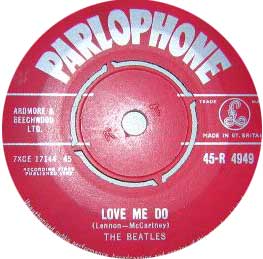 In the end, of course, George Martin chose “Love Me Do,” as the a-side and “P.S. I Love You” for the b-side of their very first British single because publishers' disputes argued against releasing “How Do You Do It” on either side of their first single, this song being reserved for an eventual release by Gerry and The Pacemakers. “Ask Me Why” was now deemed worthy for future consideration for The Beatles. In the end, of course, George Martin chose “Love Me Do,” as the a-side and “P.S. I Love You” for the b-side of their very first British single because publishers' disputes argued against releasing “How Do You Do It” on either side of their first single, this song being reserved for an eventual release by Gerry and The Pacemakers. “Ask Me Why” was now deemed worthy for future consideration for The Beatles.
November 26th, 1962 was the session date for the recording of "Ask Me Why" as we all know it. This three hour session in EMI Studio Two, with the intention of recording both sides of their second single, started at 7 pm. and ended at 10 pm, George Martin being the producer with Norman Smith as engineer. The group actually arrived at the studio at 6 pm for a rehearsal session.
.jpg) The first two hours were spent recording “Please Please Me,” which was chosen for the a-side of the single. After a short tea break, they returned at approximately 9 pm for recording six takes of “Ask Me Why,” "take six" being deemed the best. This was a completely live performance with no overdubs or edits. The first two hours were spent recording “Please Please Me,” which was chosen for the a-side of the single. After a short tea break, they returned at approximately 9 pm for recording six takes of “Ask Me Why,” "take six" being deemed the best. This was a completely live performance with no overdubs or edits.
 At the time, it was not guaranteed that “Ask Me Why” was going to be the choice for the b-side of their second single. They also recorded an unnumbered amount of takes of a new original song called “Tip Of My Tongue.” After several attempts at recording this song, George Martin had decided that its arrangement needed to be developed further and it should be left off for another time. This, of course, never happened, and the song was given to Tommy Quickly to record, which he did in July of 1963. At the time, it was not guaranteed that “Ask Me Why” was going to be the choice for the b-side of their second single. They also recorded an unnumbered amount of takes of a new original song called “Tip Of My Tongue.” After several attempts at recording this song, George Martin had decided that its arrangement needed to be developed further and it should be left off for another time. This, of course, never happened, and the song was given to Tommy Quickly to record, which he did in July of 1963.
 George Martin's decision to pass up on “Tip Of My Tongue” for the time being left “Ask My Why” as the b-side to “Please Please Me.” One thing that was for certain is that the band wanted both sides of their next single, like their first, to be original compositions. George Martin's decision to pass up on “Tip Of My Tongue” for the time being left “Ask My Why” as the b-side to “Please Please Me.” One thing that was for certain is that the band wanted both sides of their next single, like their first, to be original compositions.
Three mixes were made of "Ask Me Why." The first was a mono mix that was created on November 30th, 1962 in the EMI Studio Two control room by George Martin and engineer Norman Smith. This was deemed suitable for the single release, which came out in the UK on January 11th, 1963.
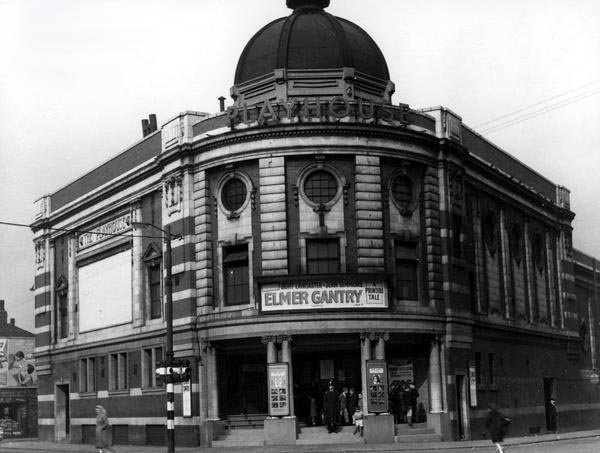 Two further BBC recordings of "Ask Me Why" occurred in January of 1963, the same month it was officially released in their home country as a single. The first was on January 16th at The Playhouse Theatre in Manchester between 8:45 to 9:30 pm for the radio program "Here We Go," the purpose being to premier both sides of their currently released single (as well as the soon to be recorded "Chains"). This show aired on January 25th between 5 and 5:29 pm, this time with Ringo on drums. Surprisingly, also on this same day, they mimed a live performance of the song on the Granada TV show "People And Places" along with the song's a-side "Please Please Me." Two further BBC recordings of "Ask Me Why" occurred in January of 1963, the same month it was officially released in their home country as a single. The first was on January 16th at The Playhouse Theatre in Manchester between 8:45 to 9:30 pm for the radio program "Here We Go," the purpose being to premier both sides of their currently released single (as well as the soon to be recorded "Chains"). This show aired on January 25th between 5 and 5:29 pm, this time with Ringo on drums. Surprisingly, also on this same day, they mimed a live performance of the song on the Granada TV show "People And Places" along with the song's a-side "Please Please Me."
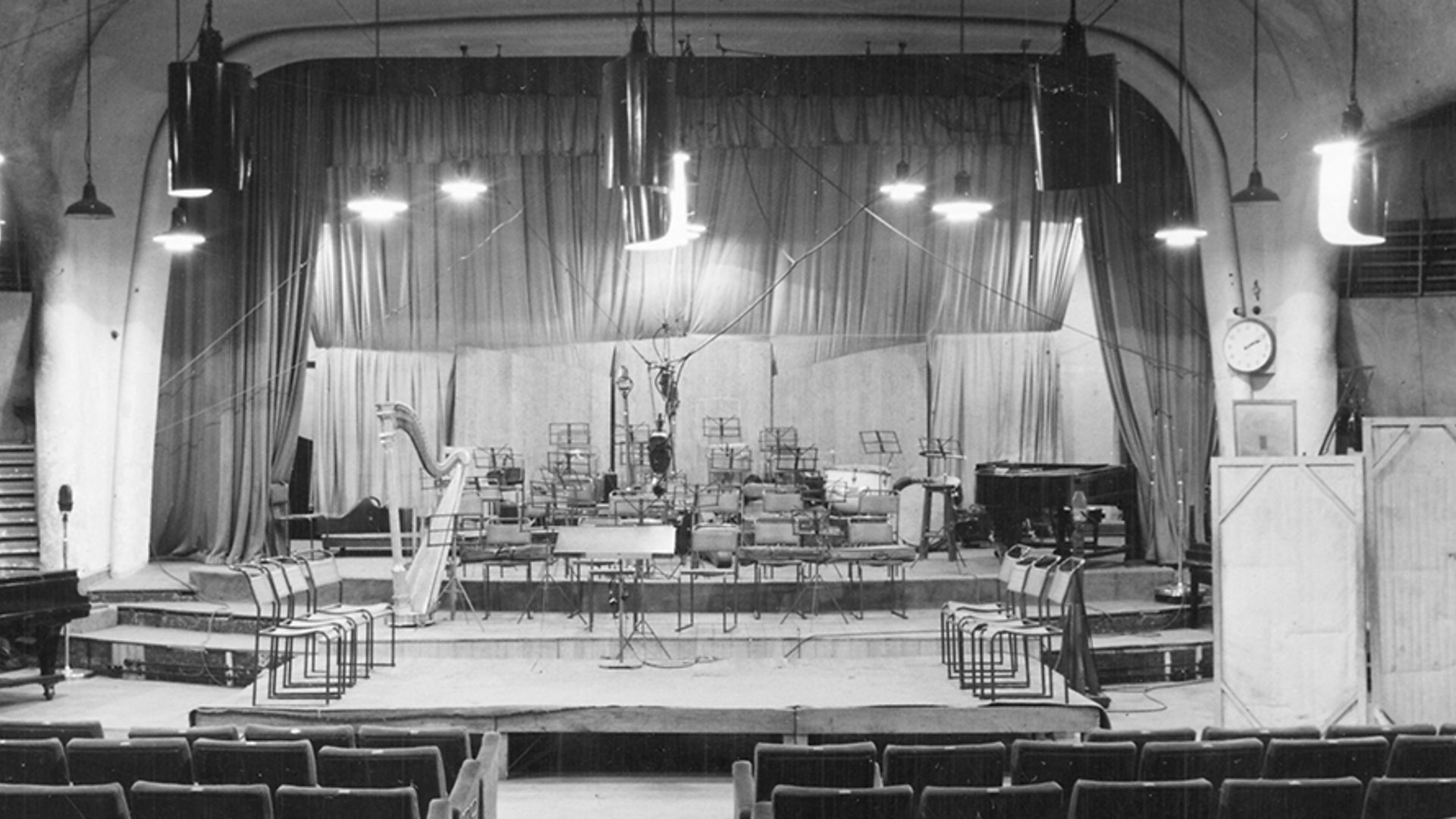 Then on January 22nd, 1963, The Beatles recorded "Ask Me Why" at BBC Paris Studio in London between 7 and 8 pm for inclusion on the British radio show "The Talent Spot," this being arranged by their music publisher Dick James. This radio show was broadcast in the UK on January 29th of that year between 5 and 5:29 pm. Then on January 22nd, 1963, The Beatles recorded "Ask Me Why" at BBC Paris Studio in London between 7 and 8 pm for inclusion on the British radio show "The Talent Spot," this being arranged by their music publisher Dick James. This radio show was broadcast in the UK on January 29th of that year between 5 and 5:29 pm.
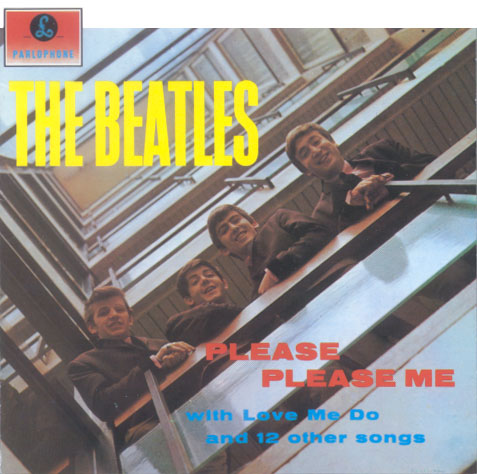 A further mono mix of the official EMI recording, as well as a stereo mix, was done during the mixing session for the “Please Please Me” album on February 25th, 1963 in the control room of EMI Studio One by producer George Martin and engineers Norman Smith and A.B. Lincoln. It was then decided that the original mono mix of "Ask Me Why" needed a touch of reverb to match the rest of the album. Since the original session tapes were still available, a true stereo mix could be done. A further mono mix of the official EMI recording, as well as a stereo mix, was done during the mixing session for the “Please Please Me” album on February 25th, 1963 in the control room of EMI Studio One by producer George Martin and engineers Norman Smith and A.B. Lincoln. It was then decided that the original mono mix of "Ask Me Why" needed a touch of reverb to match the rest of the album. Since the original session tapes were still available, a true stereo mix could be done.
 On April 4th, 1963, an interesting private recording of the song was made by John Bloomfield, a fifteen-year-old student in the audience of Roxburgh Hall in Stowe School where The Beatles performed 22 songs from 6:30 to 7:30 pm. This concert was arranged for with Brian Epstein by a student originally from Liverpool for 100 pounds, ticket sales for this program amounting to 150 pounds. On April 4th, 1963, an interesting private recording of the song was made by John Bloomfield, a fifteen-year-old student in the audience of Roxburgh Hall in Stowe School where The Beatles performed 22 songs from 6:30 to 7:30 pm. This concert was arranged for with Brian Epstein by a student originally from Liverpool for 100 pounds, ticket sales for this program amounting to 150 pounds.
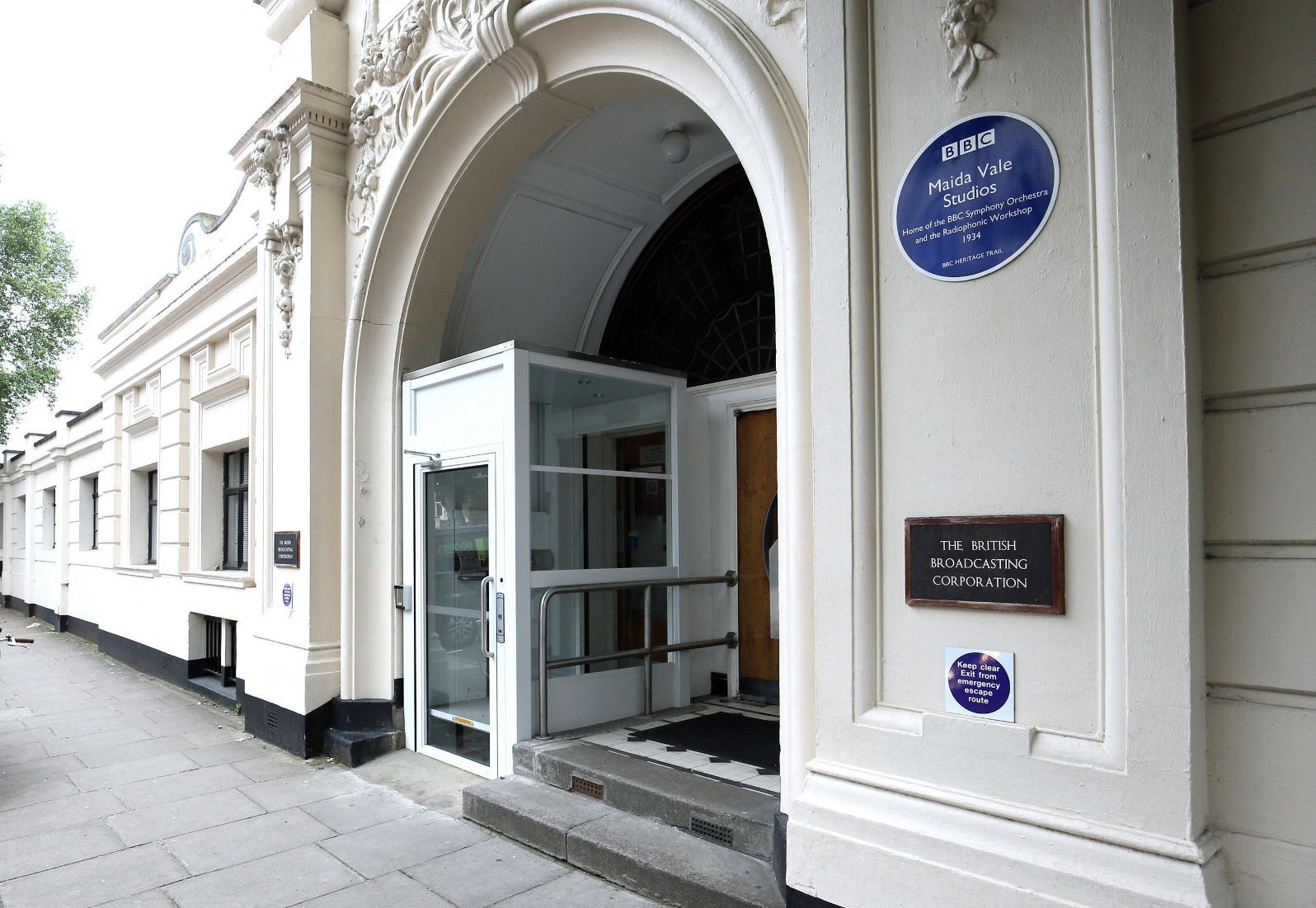 The Beatles were still performing "Ask Me Why" as of July of 1963, as they recorded it on July 2nd in Studio Five of Maide Vale Studios in London between 6:30 and 9:30 pm for the fifth edition of the British radio show “Pop Go The Beatles.” This recording was produced by Terry Henebery but "Ask Me Why" ended up being omitted when this program aired on the BBC. September 3rd, 1963 saw what appears to be the band's last performance and recording of "Ask Me Why," this occurring in Studio Two of Aeolian Hall in London between 8 and 10:30 pm with Ian Grant producing for the 15th edition of the BBC series “Pop Go The Beatles.” This edition didn’t air until September 24th, 1963 between 5 and 5:29 pm. The Beatles were still performing "Ask Me Why" as of July of 1963, as they recorded it on July 2nd in Studio Five of Maide Vale Studios in London between 6:30 and 9:30 pm for the fifth edition of the British radio show “Pop Go The Beatles.” This recording was produced by Terry Henebery but "Ask Me Why" ended up being omitted when this program aired on the BBC. September 3rd, 1963 saw what appears to be the band's last performance and recording of "Ask Me Why," this occurring in Studio Two of Aeolian Hall in London between 8 and 10:30 pm with Ian Grant producing for the 15th edition of the BBC series “Pop Go The Beatles.” This edition didn’t air until September 24th, 1963 between 5 and 5:29 pm.
Song Structure and Style
 This song could probably win an award for being the most complicated and confusing song structure in the early Beatles catalog. It is true that all conventional rules of songwriting went out of the window in later years, such as with “Happiness Is A Warm Gun.” But as for The Beatles songwriting styles throughout their entire career, there are only a few exceptions to the established song structures very common in popular music. This song truly is one of those exceptions. To the average listener, “Ask Me Why” is just an average early Beatles song with its distinctive harmonies and breaks. But when analyzed, we can surmise that Lennon and McCartney hadn’t quite fallen into their songwriting “groove” yet. This song could probably win an award for being the most complicated and confusing song structure in the early Beatles catalog. It is true that all conventional rules of songwriting went out of the window in later years, such as with “Happiness Is A Warm Gun.” But as for The Beatles songwriting styles throughout their entire career, there are only a few exceptions to the established song structures very common in popular music. This song truly is one of those exceptions. To the average listener, “Ask Me Why” is just an average early Beatles song with its distinctive harmonies and breaks. But when analyzed, we can surmise that Lennon and McCartney hadn’t quite fallen into their songwriting “groove” yet.
 This is not to say that the song "Ask Me Why" is “bad” by any stretch of the imagination. Quite to the contrary, this song has an understated charm. It flows with the precision that comes from extensive rehearsal and performance, being that it had been part of their stage act for many months before this official recording session. The structure of the song may be confusing when under scrutiny, but everyone had all the changes down perfectly. They knew where the song was going and that’s all that counts. This is not to say that the song "Ask Me Why" is “bad” by any stretch of the imagination. Quite to the contrary, this song has an understated charm. It flows with the precision that comes from extensive rehearsal and performance, being that it had been part of their stage act for many months before this official recording session. The structure of the song may be confusing when under scrutiny, but everyone had all the changes down perfectly. They knew where the song was going and that’s all that counts.
The best analysis of the song's structure shows that it consists of a ‘verse/ altered verse/ bridge/ refrain’ pattern (which we will call abcd). But after this pattern occurs, we then see a ‘verse/ refrain/ bridge/ refrain’ pattern (which can be shown as adcd). Adding to the confusion is the number of breaks that occur throughout the song, possibly with the intention of creating a transition from one section of the song to the other. This may be difficult to follow, but we’ll discuss a play-by-play to make things clearer (or more confusing).
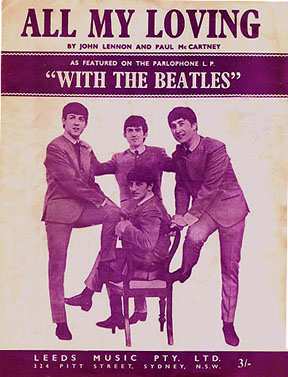 The arrangement of "Ask Me Why" begins with a two measure instrumental introduction which includes a break immediately followed by the opening words of the first verse. The band's habit of having the opening lyrics of the verse come before the first measure of that verse is heard in many Beatle songs throughout their career, such as “All My Loving” and “All I’ve Got To Do.” The distinctive background harmonies of McCartney and Harrison are then heard immediately backing John’s lead vocal. The first verse has an odd thirteen measures, which include two breaks. The arrangement of "Ask Me Why" begins with a two measure instrumental introduction which includes a break immediately followed by the opening words of the first verse. The band's habit of having the opening lyrics of the verse come before the first measure of that verse is heard in many Beatle songs throughout their career, such as “All My Loving” and “All I’ve Got To Do.” The distinctive background harmonies of McCartney and Harrison are then heard immediately backing John’s lead vocal. The first verse has an odd thirteen measures, which include two breaks.
The song then enters into another 13-measure verse, which initially appears to be identical to the first verse structurally, but is altered at the end in order to create a suitable transition into the bridge which follows. Only one break occurs during this altered verse.
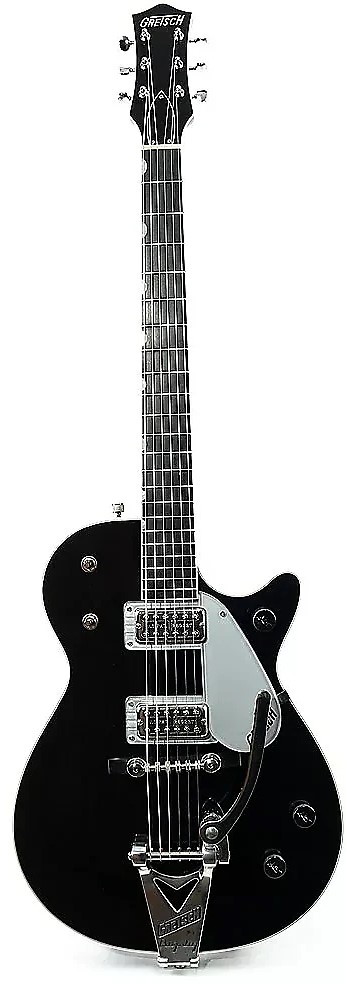 The bridge has a standard eight measures but concludes with a pronounced break that strongly emphasizes the harmonized word “misery.” This song then moves into what appears to be another verse because of it starting with the title of the song in the lyrics, but is very quickly revealed to be a refrain, which ends the series of the song’s components with a proper resolve. The bridge has a standard eight measures but concludes with a pronounced break that strongly emphasizes the harmonized word “misery.” This song then moves into what appears to be another verse because of it starting with the title of the song in the lyrics, but is very quickly revealed to be a refrain, which ends the series of the song’s components with a proper resolve.
The sequence then appears to repeat, as another 13-measure verse begins, but we are then thrown a curve-ball by repeating the refrain, which could indicate the conclusion of the song. But, no! They follow this by entering into the identical bridge from the first sequence (ending in the pronounced “misery”) and then, for the third time, repeat the refrain again, ending with a small classy guitar flourish from Harrison.
 Definitely no fault can be found in the performance, as all vocals are spot-on pitch and all the instrumental work is played flawlessly. Harrison is found to be in especially good form, showing him equally adept at crooner tunes as he is doing Carl Perkins or Chuck Berry. Ringo has all the breaks down perfectly, even though he had inherited this song from the likes of Pete Best before him. Lennon’s vocals crack at times, but it only comes across as adding a bit of character to the vocal performance. Definitely no fault can be found in the performance, as all vocals are spot-on pitch and all the instrumental work is played flawlessly. Harrison is found to be in especially good form, showing him equally adept at crooner tunes as he is doing Carl Perkins or Chuck Berry. Ringo has all the breaks down perfectly, even though he had inherited this song from the likes of Pete Best before him. Lennon’s vocals crack at times, but it only comes across as adding a bit of character to the vocal performance.
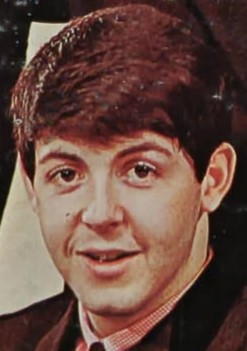 As for the lyrics, they are simply a somewhat cliché-heavy ode to the joys of being in love. McCartney admitted that at times the lyrics in their compositions were considered secondary to their musical structure. This being an earlier entry in their songbook, much better lyrical content was to come. The focus of this song should most definitely be on the song's structural complexity. As for the lyrics, they are simply a somewhat cliché-heavy ode to the joys of being in love. McCartney admitted that at times the lyrics in their compositions were considered secondary to their musical structure. This being an earlier entry in their songbook, much better lyrical content was to come. The focus of this song should most definitely be on the song's structural complexity.
American Releases
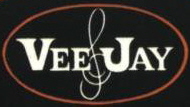 This song has the privilege of being one of the first two Beatles songs released in America. It was featued as the b-side of their first US single “Please Please Me” released on February 7th, 1963 on Vee-Jay Records (who misspelled the artist as “The Beattles” on their labels). The vast majority of American record buyers were totally unaware of this release since the record failed to make the charts. This song has the privilege of being one of the first two Beatles songs released in America. It was featued as the b-side of their first US single “Please Please Me” released on February 7th, 1963 on Vee-Jay Records (who misspelled the artist as “The Beattles” on their labels). The vast majority of American record buyers were totally unaware of this release since the record failed to make the charts.
 The next American appearance of the song was on January 27th, 1964 with the release of version two of the album “Introducing…The Beatles” on Vee-Jay Records. The first version, released on January 10th, 1964 contained the songs “Love Me Do” and “P.S. I Love You,” but due to a pending lawsuit, both of these songs belonged to an EMI publishing company and Vee-Jay was notified to immediately cease and desist printing the LP. In order to remedy the situation, they replaced those two songs with “Please Please Me” and “Ask Me Why,” this second version of the album being released on February 10th, 1964. Since this album sold over 1.3 million copies and made it to #2 on the Billboard album chart, this was the first time the majority of American Beatle fans got to hear the song. The next American appearance of the song was on January 27th, 1964 with the release of version two of the album “Introducing…The Beatles” on Vee-Jay Records. The first version, released on January 10th, 1964 contained the songs “Love Me Do” and “P.S. I Love You,” but due to a pending lawsuit, both of these songs belonged to an EMI publishing company and Vee-Jay was notified to immediately cease and desist printing the LP. In order to remedy the situation, they replaced those two songs with “Please Please Me” and “Ask Me Why,” this second version of the album being released on February 10th, 1964. Since this album sold over 1.3 million copies and made it to #2 on the Billboard album chart, this was the first time the majority of American Beatle fans got to hear the song.
 Another early attempt by Vee-Jay records to saturate the US with Beatles product came with the release (on February 26th, 1964) of an album entitled “Jolly What! England’s Greatest Recording Stars: The Beatles and Frank Ifield On Stage.” Vee-Jay had temporarily acquired the rights to the catalog of English singer/yodeler Frank Ifield and, as a package deal, The Beatles back in early 1963. The label then released this album to convince Beatles fans that this was a “Live” Beatles performance, although, of course, it wasn’t. As a footnote, Vee-Jay had done the same thing with their blues artist Jimmy Reed, with a double album the label titled “Jimmy Reed At Carnegie Hall.” The title didn’t say Live at Carnegie Hall, and it indeed wasn’t live at all. A picture of him at Carnegie Hall on the cover was enough for Vee-Jay to say they weren’t lying. After all, he was there! Another early attempt by Vee-Jay records to saturate the US with Beatles product came with the release (on February 26th, 1964) of an album entitled “Jolly What! England’s Greatest Recording Stars: The Beatles and Frank Ifield On Stage.” Vee-Jay had temporarily acquired the rights to the catalog of English singer/yodeler Frank Ifield and, as a package deal, The Beatles back in early 1963. The label then released this album to convince Beatles fans that this was a “Live” Beatles performance, although, of course, it wasn’t. As a footnote, Vee-Jay had done the same thing with their blues artist Jimmy Reed, with a double album the label titled “Jimmy Reed At Carnegie Hall.” The title didn’t say Live at Carnegie Hall, and it indeed wasn’t live at all. A picture of him at Carnegie Hall on the cover was enough for Vee-Jay to say they weren’t lying. After all, he was there!
 Coupling this with the fact that only four Beatles songs appeared on the LP, “Ask My Why” being one, sales ended up being pretty bad. Actually, approximately 50,000 copies were quickly sold but over half of these were returned, mostly because of the fraudulent claims sited on the sleeve. The label's quickly assembled cover featured a drawing of a moustached English statesman with Beatles hair on the front cover. The back cover included various “British” sounding slang terms within the liner notes, mistakenly, but humorously, calling the album a “copulation” instead of a compilation! Coupling this with the fact that only four Beatles songs appeared on the LP, “Ask My Why” being one, sales ended up being pretty bad. Actually, approximately 50,000 copies were quickly sold but over half of these were returned, mostly because of the fraudulent claims sited on the sleeve. The label's quickly assembled cover featured a drawing of a moustached English statesman with Beatles hair on the front cover. The back cover included various “British” sounding slang terms within the liner notes, mistakenly, but humorously, calling the album a “copulation” instead of a compilation!
 Also sometime in February of 1964, Vee-Jay planned on issuing another single to promote the "Introducing The Beatles" album. Before the label decided on "Twist And Shout" as the next Beatles single, they considered releasing "Anna" as a single with "Ask Me Why" as the b-side. They pressed a limited number of promotional copies using the catalog number "Spec. DJ No. 8" with the intention of sending these singles to American radio stations. Almost no one in the US was aware of this extremely rare promotional record since only four copies are known to exist. Also sometime in February of 1964, Vee-Jay planned on issuing another single to promote the "Introducing The Beatles" album. Before the label decided on "Twist And Shout" as the next Beatles single, they considered releasing "Anna" as a single with "Ask Me Why" as the b-side. They pressed a limited number of promotional copies using the catalog number "Spec. DJ No. 8" with the intention of sending these singles to American radio stations. Almost no one in the US was aware of this extremely rare promotional record since only four copies are known to exist.
 March 23rd, 1964, was the next appearance of the song on the Vee-Jay EP “The Beatles – Souvenir of Their Visit To America.” This was the label's quick attempt to capitalize on the group's first US visit in February. Even though the four-song EP failed to chart on Billboard, it went on to sell 78,800 copies, which was quite a feat for Vee-Jay. March 23rd, 1964, was the next appearance of the song on the Vee-Jay EP “The Beatles – Souvenir of Their Visit To America.” This was the label's quick attempt to capitalize on the group's first US visit in February. Even though the four-song EP failed to chart on Billboard, it went on to sell 78,800 copies, which was quite a feat for Vee-Jay.
 Vee-Jay made "Ask Me Why" the primary promotional focus of the EP. They sent special promotional sleeves with this EP to disc jockeys across the US encouraging them to play "Ask Me Why" on the air, also stating this is "the EP that is selling like a single." Fewer than 10 copies of this sleeve are known to exist. Vee-Jay made "Ask Me Why" the primary promotional focus of the EP. They sent special promotional sleeves with this EP to disc jockeys across the US encouraging them to play "Ask Me Why" on the air, also stating this is "the EP that is selling like a single." Fewer than 10 copies of this sleeve are known to exist.
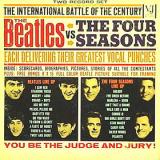 As Vee-Jay’s licensing to release Beatles material was expiring, they tried three more attempts at cashing in on The Beatles craze. All three of these attempts were albums that featured the song “Ask Me Why.” The first attempt was the album “The Beatles vs. The Four Seasons” which was released on October 1, 1964. This was a repackaging of the “Introducing…The Beatles” album with “'The Golden Hits of the Four Seasons” as a double album. This compilation album only peaked at #142 on the Billboard album chart, selling only 20,000 copies. As Vee-Jay’s licensing to release Beatles material was expiring, they tried three more attempts at cashing in on The Beatles craze. All three of these attempts were albums that featured the song “Ask Me Why.” The first attempt was the album “The Beatles vs. The Four Seasons” which was released on October 1, 1964. This was a repackaging of the “Introducing…The Beatles” album with “'The Golden Hits of the Four Seasons” as a double album. This compilation album only peaked at #142 on the Billboard album chart, selling only 20,000 copies.
 The next release was a desperate act by Vee-Jay in repackaging the “Jolly What” album detailed above as “The Beatles And Frank Ifield On Stage,” which was released on October 10th, 1964 but only reached #104 on the Billboard album chart. This album is considered one of the rarest US Beatles album, reportedly fetching $22,000 in 1995. The last gasp from Vee-Jay was yet another repackaging of the “Introducing…The Beatles” album as “Songs, Pictures And Stories Of The Fabulous Beatles” on October 12, 1964. It was actually the original “Introducing” album placed in a new sleeve. It peaked at #63 on the US Billboard album chart, selling 400,000 copies, this album also featuring “Ask Me Why.” The next release was a desperate act by Vee-Jay in repackaging the “Jolly What” album detailed above as “The Beatles And Frank Ifield On Stage,” which was released on October 10th, 1964 but only reached #104 on the Billboard album chart. This album is considered one of the rarest US Beatles album, reportedly fetching $22,000 in 1995. The last gasp from Vee-Jay was yet another repackaging of the “Introducing…The Beatles” album as “Songs, Pictures And Stories Of The Fabulous Beatles” on October 12, 1964. It was actually the original “Introducing” album placed in a new sleeve. It peaked at #63 on the US Billboard album chart, selling 400,000 copies, this album also featuring “Ask Me Why.”
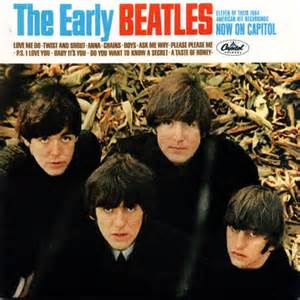 Capitol Records, who now acquired the rights to issue the early Beatles catalog, released the album “The Early Beatles” on March 22nd, 1965. This cemented the availability of “Ask Me Why” for American enthusiasts throughout the next couple of decades. Incidentally, the mono release of this album contained a "Type B" foldover mix of the songs created by Capitol Records that combined both channels of the stereo mix into one channel, the legitimate mono mixes of these songs created by George Martin appearing only on the above mentioned Vee-Jay releases at that time. This album then appeared on an individual CD on January 21st, 2014, containing both the mono and stereo mixes on one disc. Capitol Records, who now acquired the rights to issue the early Beatles catalog, released the album “The Early Beatles” on March 22nd, 1965. This cemented the availability of “Ask Me Why” for American enthusiasts throughout the next couple of decades. Incidentally, the mono release of this album contained a "Type B" foldover mix of the songs created by Capitol Records that combined both channels of the stereo mix into one channel, the legitimate mono mixes of these songs created by George Martin appearing only on the above mentioned Vee-Jay releases at that time. This album then appeared on an individual CD on January 21st, 2014, containing both the mono and stereo mixes on one disc.
 Sometime in 1967, Capitol released Beatles music on a new but short-lived format called "Playtapes." These tape cartridges did not have the capability to include entire albums, so two four-song versions of "The Early Beatles" came out on this portable format, "Ask Me Why" being on one of these. These "Playtapes" are quite hard to find today. Sometime in 1967, Capitol released Beatles music on a new but short-lived format called "Playtapes." These tape cartridges did not have the capability to include entire albums, so two four-song versions of "The Early Beatles" came out on this portable format, "Ask Me Why" being on one of these. These "Playtapes" are quite hard to find today.
 The next release of the song was in 1981 on an album entitled "Live - 1962 - Hamburg Germany" on the Hall Of Music label. The Beatles performed "Ask Me Why" on their last residency in Hamburg during the 1962 Christmas season, which happened to have been recorded from the audience on a portable Grundig reel-to-reel tape recorder. This recording surfaced in many forms in the late '70s and early '80s but Hall Of Music was the first label to have the guts to include any Lennon / McCartney songs, due to the possibility of lawsuits. The next release of the song was in 1981 on an album entitled "Live - 1962 - Hamburg Germany" on the Hall Of Music label. The Beatles performed "Ask Me Why" on their last residency in Hamburg during the 1962 Christmas season, which happened to have been recorded from the audience on a portable Grundig reel-to-reel tape recorder. This recording surfaced in many forms in the late '70s and early '80s but Hall Of Music was the first label to have the guts to include any Lennon / McCartney songs, due to the possibility of lawsuits.
 Collectables Records also had the guts. The next release of "Ask Me Why" was the same Hamburg recording released as a short-lived single in 1982, featuring "Twist And Shout" as the b-side. Collectables Records also had the guts. The next release of "Ask Me Why" was the same Hamburg recording released as a short-lived single in 1982, featuring "Twist And Shout" as the b-side.
The next time the official recording of "Ask Me Why" was paired up with "Please Please Me" on a single in the US was on December 6th, 1982 as included within the vinyl box set "The Beatles Singles Collection." When this set was released as "The Beatles CD Singles Collection" on November 11th, 1992 and as a reissued vinyl collection titled "The Singles Collection" on November 22nd, 2019, this same 45 was included featuring George Martin's first mono mix of "Ask Me Why" as issued on the original single in Britain.
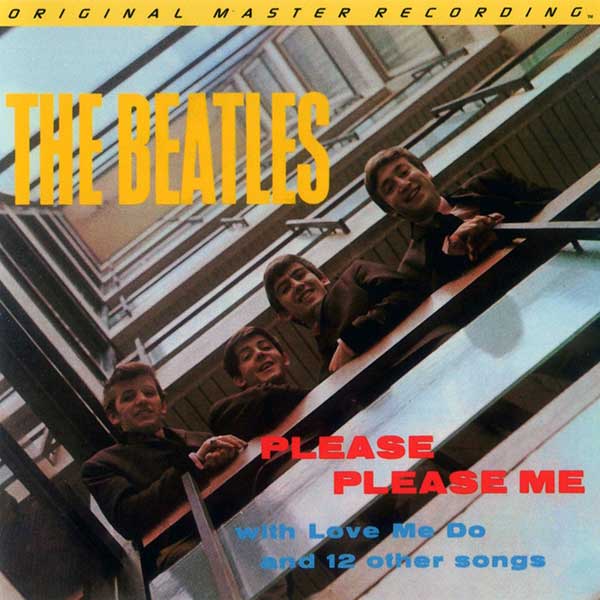 The first time the original British "Please Please Me" album was made available in the US was the "Original Master Recording" vinyl edition that was released through Mobile Fidelity Sound Lab in January of 1987. This album included "Ask Me Why" and was manufatured by them by utilizing half-speed mastering technology from the original master tape on loan from EMI. This version of the LP was only available for a short time and is quite collectible today. The first time the original British "Please Please Me" album was made available in the US was the "Original Master Recording" vinyl edition that was released through Mobile Fidelity Sound Lab in January of 1987. This album included "Ask Me Why" and was manufatured by them by utilizing half-speed mastering technology from the original master tape on loan from EMI. This version of the LP was only available for a short time and is quite collectible today.
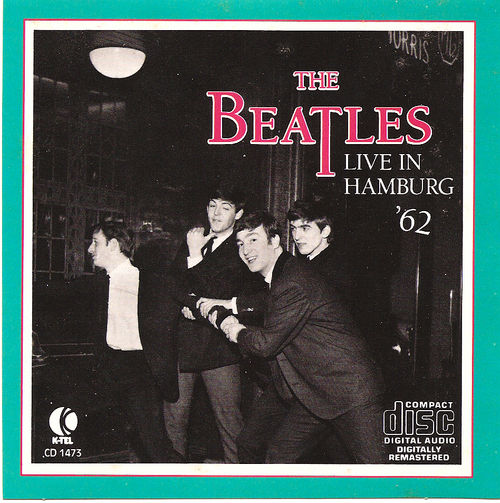 With the dawning of the compact disc era in the 1980's, music fans were eagerly waiting for the delayed release of the Beatles catalog on CD. K-Tel Records thought to cash in on all of this expectation by releasing "Live In Hamburg '62" in early February 1987, which was just prior to the release of the first four Beatles albums by Apple Records. A good amount of Beatles fans couldn't hardly resist owning a live CD by their favorite group that featured 20 tracks including "Ask Me Why," not realizing that this was such a lo-fi rough recording as released many times before on vinyl, detailed above. With the dawning of the compact disc era in the 1980's, music fans were eagerly waiting for the delayed release of the Beatles catalog on CD. K-Tel Records thought to cash in on all of this expectation by releasing "Live In Hamburg '62" in early February 1987, which was just prior to the release of the first four Beatles albums by Apple Records. A good amount of Beatles fans couldn't hardly resist owning a live CD by their favorite group that featured 20 tracks including "Ask Me Why," not realizing that this was such a lo-fi rough recording as released many times before on vinyl, detailed above.
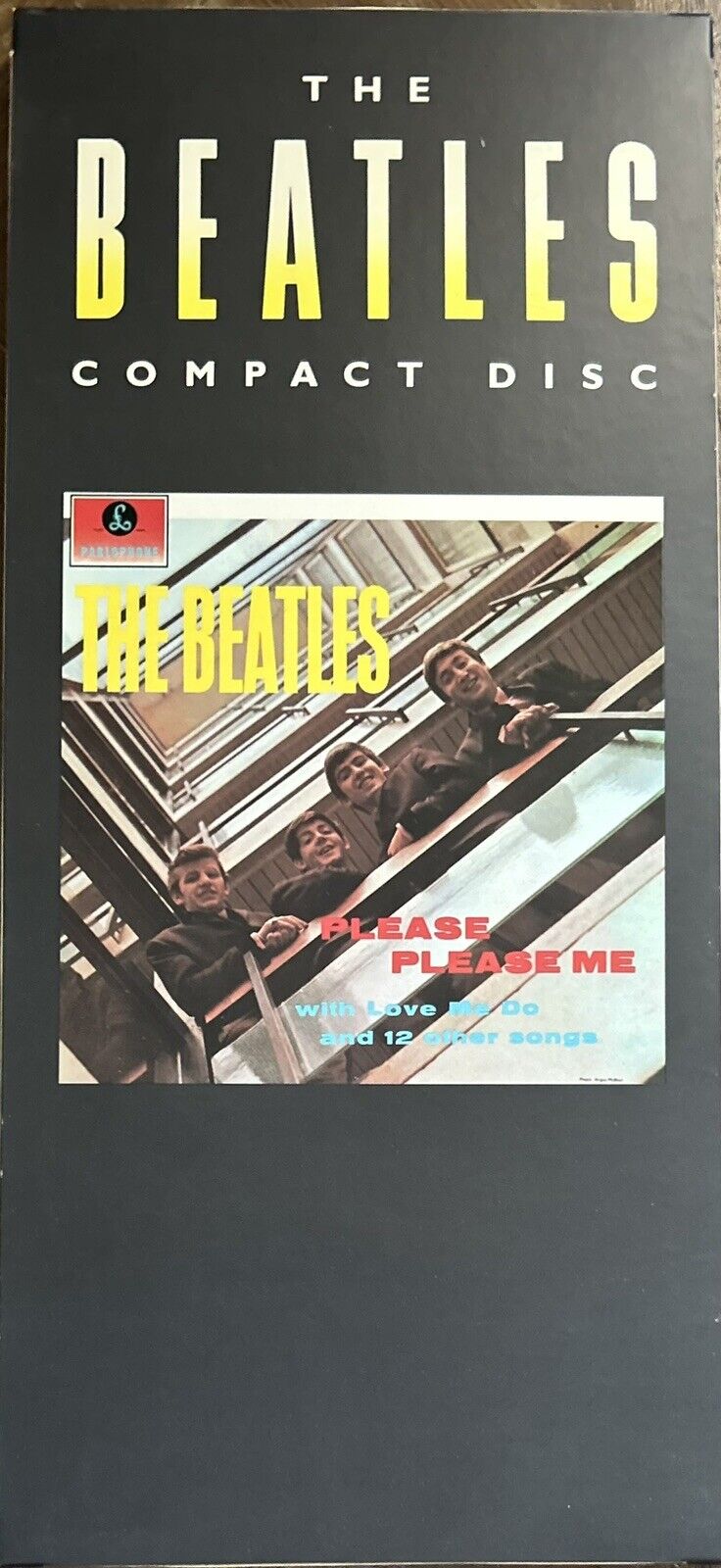 On February 26th, 1987, the British “Please Please Me” album was released on compact disc, featuring George Martin's second mono mix of “Ask Me Why.” This album was released in the US on vinyl on July 21st, 1987. The album was then remastered and re-released on September 9th, 2009 on CD and then on November 13th, 2012 on vinyl, but this time the entire album contained the original stereo mixes. On February 26th, 1987, the British “Please Please Me” album was released on compact disc, featuring George Martin's second mono mix of “Ask Me Why.” This album was released in the US on vinyl on July 21st, 1987. The album was then remastered and re-released on September 9th, 2009 on CD and then on November 13th, 2012 on vinyl, but this time the entire album contained the original stereo mixes.
 Sometime during 1991, the Sony Music CD label took it upon themselves to release two volumes of the above mentioned 1962 Hamburg recordings, "Live! At The Star Club In Hamburg, Germany; 1962 (Vol. 2)" featuring "Ask Me Why." The release of these volumes prompted legal action from The Beatles, Sony Music discontinuing production of these volumes because of a lawsuit that had been filed. By 1998, The Beatles had won the right of ownership of these recordings, any releases surfacing after this point being illegally produced bootlegs. Sometime during 1991, the Sony Music CD label took it upon themselves to release two volumes of the above mentioned 1962 Hamburg recordings, "Live! At The Star Club In Hamburg, Germany; 1962 (Vol. 2)" featuring "Ask Me Why." The release of these volumes prompted legal action from The Beatles, Sony Music discontinuing production of these volumes because of a lawsuit that had been filed. By 1998, The Beatles had won the right of ownership of these recordings, any releases surfacing after this point being illegally produced bootlegs.
 Then on June 30th, 1992, Capitol Records released the box set “Compact Disc EP Collection.” This set featured “Ask Me Why” because of the song being originally included on the British EP “All My Loving” released on February 7th, 1964. Then on June 30th, 1992, Capitol Records released the box set “Compact Disc EP Collection.” This set featured “Ask Me Why” because of the song being originally included on the British EP “All My Loving” released on February 7th, 1964.
The box set “The Capitol Albums, Vol. 2” was released on April 11th, 2006, and contains "Ask Me Why" in stereo and in "Type B" foldover mono as heard on the original "Early Beatles" album.
 September 9th, 2009 was also the date that the CD box set “The Beatles In Mono” was released. This set features George Martin's second mono mix of "Ask Me Why" remastered for excellent clarity. The vinyl edition of this set was released on September 9th, 2014. September 9th, 2009 was also the date that the CD box set “The Beatles In Mono” was released. This set features George Martin's second mono mix of "Ask Me Why" remastered for excellent clarity. The vinyl edition of this set was released on September 9th, 2014.
On November 11, 2013, a release entitled "On Air - Live At The BBC Volume 2" came out that featured an unreleased rendition of "Ask Me Why" that was recorded on September 3rd, 1963 for the British radio program "Pop Go The Beatles."
Live Performances
 "The Beatles learned 'Ask Me Why' in a private afternoon rehearsal in the Cavern," states Mark Lewisohn's book "Tune In," adding, "and though it didn't go into the regular set just yet, there's an unconfirmed suggestion it was played in one of their last pre-Hamburg shows, at the start of April (1962)." This song was then premiered for George Martin during their EMI audition on June 6th of that year, with Pete Best still in the band at that time. "The Beatles learned 'Ask Me Why' in a private afternoon rehearsal in the Cavern," states Mark Lewisohn's book "Tune In," adding, "and though it didn't go into the regular set just yet, there's an unconfirmed suggestion it was played in one of their last pre-Hamburg shows, at the start of April (1962)." This song was then premiered for George Martin during their EMI audition on June 6th of that year, with Pete Best still in the band at that time.
 From July through December 1962, the song was performed in their “stage act” at the Cavern Club in Liverpool until their final trip to Hamburg for New Years Eve. This is confirmed by its inclusion on the "Live 1962 Hamburg Germany" LP detailed above, this performance being recorded during the 1962 Christmas season. From July through December 1962, the song was performed in their “stage act” at the Cavern Club in Liverpool until their final trip to Hamburg for New Years Eve. This is confirmed by its inclusion on the "Live 1962 Hamburg Germany" LP detailed above, this performance being recorded during the 1962 Christmas season.
All of the above performances of “Ask Me Why” occurred before the record was released in the UK on the Parlophone label, which happened on January 11th, 1963 as the b-side of “Please Please Me.”
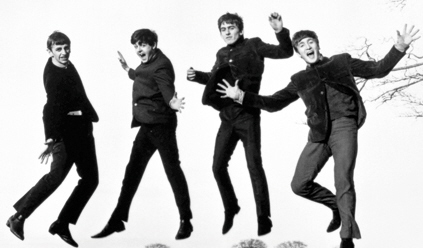 Then on January 16th, 1963, The Beatles mimed a live performance of the song on the Granada television show "People And Places" along with the song's a-side "Please Please Me." Then on January 16th, 1963, The Beatles mimed a live performance of the song on the Granada television show "People And Places" along with the song's a-side "Please Please Me."
As detailed above, The Beatles performed "Ask My Why" on April 4th, 1963 during a unique hour-long concert at Roxburgh Hall, Stowe School in Stowe, Bucks. After this date, available playlists for their live performances did not include “Ask Me Why” anymore. They were no doubt already looking ahead to the future.
Conclusion
 It’s rather unfortunate that this excellent Lennon/McCartney composition has suffered the fate of obscurity, even shortly after its initial release. It’s obvious that The Beatles thought quite a lot of “Ask My Why” during the beginnings of their recording career. They decided to pass up auditioning other original compositions, such as the three Lennon/McCartney songs that they auditioned for Decca a few months before, in order to premier this newly written gem for producer George Martin in June of 1962. George Martin was impressed enough to finally give his approval for it to be recorded as a b-side. The performance alone, played with confidence and expertise, is proof enough of the pride they felt for the composition. It’s rather unfortunate that this excellent Lennon/McCartney composition has suffered the fate of obscurity, even shortly after its initial release. It’s obvious that The Beatles thought quite a lot of “Ask My Why” during the beginnings of their recording career. They decided to pass up auditioning other original compositions, such as the three Lennon/McCartney songs that they auditioned for Decca a few months before, in order to premier this newly written gem for producer George Martin in June of 1962. George Martin was impressed enough to finally give his approval for it to be recorded as a b-side. The performance alone, played with confidence and expertise, is proof enough of the pride they felt for the composition.
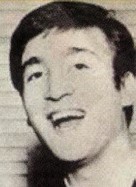 This didn’t last for long, as their songwriting progressed by leaps and bounds. They soon became quite aware of what they were capable of as songwriters and, as evidenced by the research done for this article, hardly a mention has been made by Lennon or McCartney throughout all these years about this song. It has only been referred to in passing. This didn’t last for long, as their songwriting progressed by leaps and bounds. They soon became quite aware of what they were capable of as songwriters and, as evidenced by the research done for this article, hardly a mention has been made by Lennon or McCartney throughout all these years about this song. It has only been referred to in passing.
 Even the public as a whole seems to be indifferent to this composition, if not ignorant of its existence altogether. If mentioned, people might possibly think you’re referring to the similarly titled “Tell Me Why” from the soundtrack to their “A Hard Day’s Night” movie. But there it is, bigger than life, available for all to hear in The Beatles catalog as it always has been. “Ask Me Why” may not be viewed as exactly capturing the essence of Beatlemania, but perhaps it’s time to give credit where credit is due. Even the public as a whole seems to be indifferent to this composition, if not ignorant of its existence altogether. If mentioned, people might possibly think you’re referring to the similarly titled “Tell Me Why” from the soundtrack to their “A Hard Day’s Night” movie. But there it is, bigger than life, available for all to hear in The Beatles catalog as it always has been. “Ask Me Why” may not be viewed as exactly capturing the essence of Beatlemania, but perhaps it’s time to give credit where credit is due.
Song Summary
“Ask Me Why”
Written by: Paul McCartney / John Lennon
- Song Written: April 1962
- Song Recorded: November 26, 1962
- First US Release Date: February 7, 1963
- US Single Release: Vee Jay #498 (flip side to “Please Please Me”)
- First US Album Release: Vee Jay #VJLP 1062 “Introducing…The Beatles”
- Highest Chart Position: n/a
- British Album Release: Parlophone #PCS3042 "Please Please Me”
- Length: 2:24
- Key: E major
- Producer: George Martin
- Engineer: Norman Smith
Instrumentation (most likely):
- John Lennon - Lead Vocals, Rhythm Guitar (1962 Gibson J160E)
- Paul McCartney - Bass Guitar (1961 Hofner 500/1), Background Vocals
- George Harrison – Rhythm Guitar (1957 Gretsch Duo Jet), Background Vocal
- Ringo Starr – Drums (1960 Premier 58/54 Mahogany)
Written and compiled by Dave Rybaczewski
|
IF YOU WOULD LIKE TO MAKE A DONATION TO KEEP THIS WEBSITE UP AND RUNNING, PLEASE CLICK BELOW!
Sign Up Below for our MONTHLY BEATLES TRIVIA QUIZ!
|